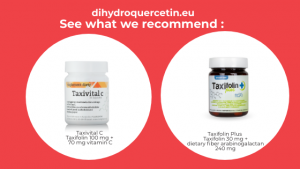The reactive oxygen species are considered to be the factor pathogenetic heart dysfunction induced by ischemia and in the development of congestive arrest, what was confirmed in 2000. Ide and partners were making direct measurement of increased generation of radical system in inefficient heart.
It has been shown that to increased generation of free radicals occur during myocardial infarction and in the development of cardiomyopathy. Research of the last decade show that reactive oxygen species can induce arrhythmia and that increased production of reactive oxygen species occurs during cardio-surgical treatments. Free radical reactions seem also to play a key role in recoil after a heart transplant.
One of the key elements affecting the correct functioning of the heart beat are the capillaries (the capillary) which is supplied oxygen and nutrients to the cells.
Suction disorders the bloodstream as a result of failure of oxygen cell suffocated and starves, which leads to the disease and destroy cells. Professor Sylwester Terek, recommended that you provide the body with antioxidants trapping free radicals.
From the point of view of the defense mechanisms of antioxidant action can be divided into three groups:
1) prevention, whose essence is to prevent reactions with reactive oxygen compounds which are biologically active,
2) assistance in which termination occurs (interruption of) adverse reactions including oxidation reaction free radical chain ,
3) to eliminate and reorganization, consisting of removal of adverse effects of the free radical reaction.
A study that conducted Plotnikov, MB, Tyukavkina on (2003) demonstrate that Dihydroquercetin (taxifolin) in addition to the primary treatment, helps to increase high-resistance laying red blood cells (erythrocytes, while retaining the building can easily pass through a very narrow capillaries) and reduce the level of Fibrinogen (values elevated, accompanied by an increased risk of thrombosis, are observed after trauma, including operations), in acute inflammatory disease, coronary artery disease, with nephrotic syndrome (excessive protein loss uncomplicated induced symptoms of urine *)in collagen disease (connective tissue diseases), in some cancer cells in myocardial infarction and strokes. The activity of the tube-capillary-protecting taxifilin prevents the destruction of cell membranes, tissue, strengthens the walls of blood vessels and capillaries, stimulates and reconstruction: lighten capillaries, enhances the blood flow, because cells begin a stage of renewal.
Taxifolin is designed to prevent the next heart attack by protecting the entire network of tiny blood vessels. As a curiosity, I can provide that the total length of all the blood vessels in the adult human being is more than 160 thousand. miles! It’s four times more than the length of the equator. In a child –there are almost 100 thousand. miles. And therefore the body on a daily basis takes the fight against free radicals, which cause the destruction of so huge amount of capillaries.
Proteinuria occurs as a result of damage to the glomeruli and is induced mostly by immunological processes in the glomeruli inflammations, which become excessively permeable to protein molecules. Glomerulus is a network of strange, (wonderful) consists of two arteries-the delivery of a greater light and elastic with a narrower view, what is important for the filtration of blood, since the pressure is produced. The network consists of about 30 loop capillary blood vessels (capillary).
1/Direct evidence for increased hydroxyl radicals originating from superoxide in the failing myocardium. Ide T, Tsutsui H, Kinugawa S, Suematsu N, Hayashidani S, Ichikawa K, Utsumi H, Machida Y, Egashira K, Takeshita A., Circ Res. 2000 Feb 4;86(2):152-7. http://www.ncbi.nlm.nih.gov/pubmed/10666410
2/Correction of the high blood viscosity syndrome by a mixture of Diquertin and Ascorbic Acid in vitro and in vivo, Plotnikov MB, Aliev OI, Maslov MJ, Vasiliev AS, Tjukavkina NA. Phytother Res. 2003 Mar;17(3):276-8. http://www.ncbi.nlm.nih.gov/pubmed/12672161
3/-Therapy capillaries, Prof. Sylvester Terek magazine “over the counter” http://www.euromedica.com.pl/index.php?page=poradyout&id=193
